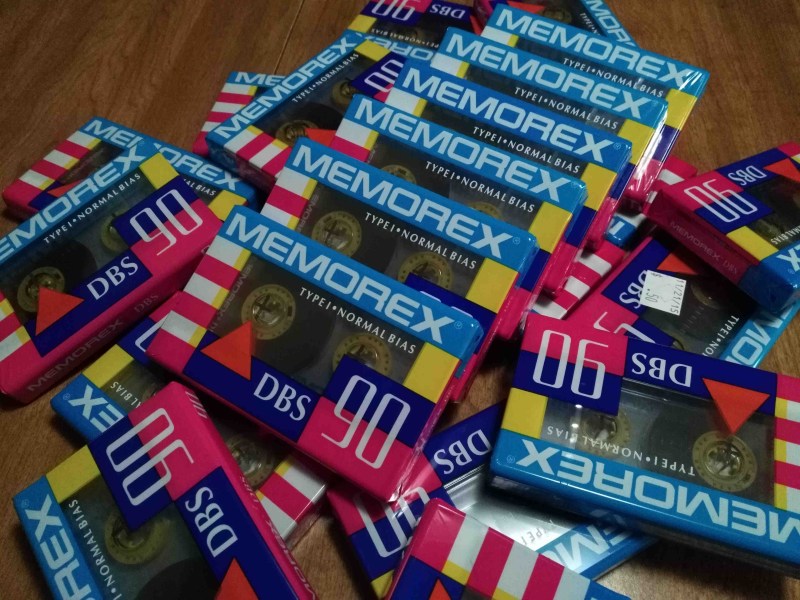[Blaine Murphy] has set out to store an archive of visual art on cassette tape. To do so he encodes images via Slow-Scan Television (SSTV), an analogue technology from the late 50s which encodes images in for radio transmission. If you are thinking ‘space race’ you are spot on, the first images of the far side of the moon reached us via SSTV and were transmitted by the soviet Luna 3 spacecraft.

Encoding images with 5os technology is only one part of this ongoing project. Storage and playback are handled by a 90s tape deck and the display unit is a contemporary Android phone. Combining several generations in one build comes with its own set of challenges, such as getting a working audio connection between the phone and the tape deck or repairing old consumer electronics. His project logs on this topic are solid contenders for ‘Fail Of The Week’ posts. For instance, making his own belts for the cassette deck was fascinating but a dead end.
The technological breadth of the project makes it more interesting with every turn. Set some time aside this weekend for an entertaining read.
Just a couple of years back ham radio operators had the opportunity to decode SSTV beamed down from the ISS when they commemorated [Yuri Gagarin’s] birthday. Now if the mechanical part of this project is what caught your interest, you’ll also want to look back on this MIDI sampler which used multiple cassette players.
















I recently also had a drive belt problem and I came up with the idea that it might be possible to 3D print them in accurate sizes with flexible filament like NinjaFlex. Since I didn’t have such kind of filament I ended up ordering a big pack of drive belts in various sizes, though.
I wrote two scad scripts for doing that. It prints a nagative in abs or pla that is filled with something like Oogoo.
https://github.com/GlenSearle/timing_belt
Printed a tooth belt from the sainsmart flexible TPU (I think it is PUR). Works well and is strong.
BUT I think a tiny, very flexible belt like in a tape deck won’t be easy. Just buy one :-)
The thing about tape belts, you don’t want a lot of stretch.
Years ago I remember repairing an old Sansui tape deck which had a knackered belt. (it had literally perished.) The fault aside from the belt was that the buttons kept sticking… taking the assembly out and spinning the flywheel by hand gave me the answer, that belt drove the flywheel and everything ran from that.
I proved the theory by sticking a rubber band in place of the belt, and sure enough, the buttons no longer stuck. The wow-factor introduced by the stretchiness of the belt though was worse than a steam-powered record player!
I bought a pack of video recorder drive belts from the Grinning Glasses (probably before VK2DIK sold them off to Woolworths) and one of those belts did the trick, the owner was very happy to have his 70s vintage tape deck going again.
Nah, though it might be cool 3d printing isn’t always the best choice. Consider bicycle tubes, for example: Easy to cut, easy to glue (and meant to be glued), very inexpensive.
That’s also a nice idea!
Bent and/or eccentrically built capstan shafts were not uncommon in mid-grade decks.
A good cleaning (ah, for a barrel of chlorinated solvents!!)and lube jube can do wonders for allowing the flywheel to do its job better.
The pinch rollers were a real problem with denting from being left pressed against the capstans.
They also tend to harden and go out of round with age.
Cassettes were pretty bad for the tape reels walking around in the shells too.
This didn’t help the wow & flutter.
Look at the slip sheets and how the tape reels move/spin in the shells.
High speed i.i fast forward and rewinding was also prone to making lumpy tape winds that made the things worse.
Getting all of the variables of the load, under better control, will help with the drive belt woes.
Good luck with your project!!!
Wow and flutter come from the capstan don’t they? It doesn’t matter what the reels do as long as they don’t have enough drag to change the speed, and the capstan has a flywheel to make sure.
I have cases and cases of NIB tapes if he has the cash. From a University AV department.
do you know oxford dictionary has removed the word “Cassette”. it was end of a nostalgic gadget.